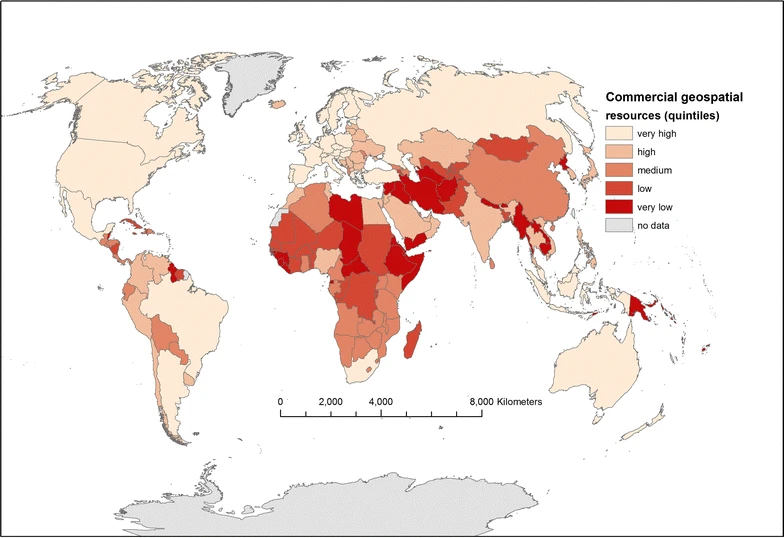
A cross-sectional ecological analysis of international and sub-national health inequalities in commercial geospatial resource availability
Abstract Background: Commercial geospatial data resources are frequently used to understand healthcare utilisation. Although there is widespread evidence of a digital divide for other digital resources and infra-structure, it is unclear how commercial geospatial data resources are distributed relative to health need. Methods To examine the distribution of commercial geospatial data resources relative to health needs, we assembled coverage and quality metrics for commercial geocoding, neighbourhood characterisation, and travel time calculation resources for 183 countries.


